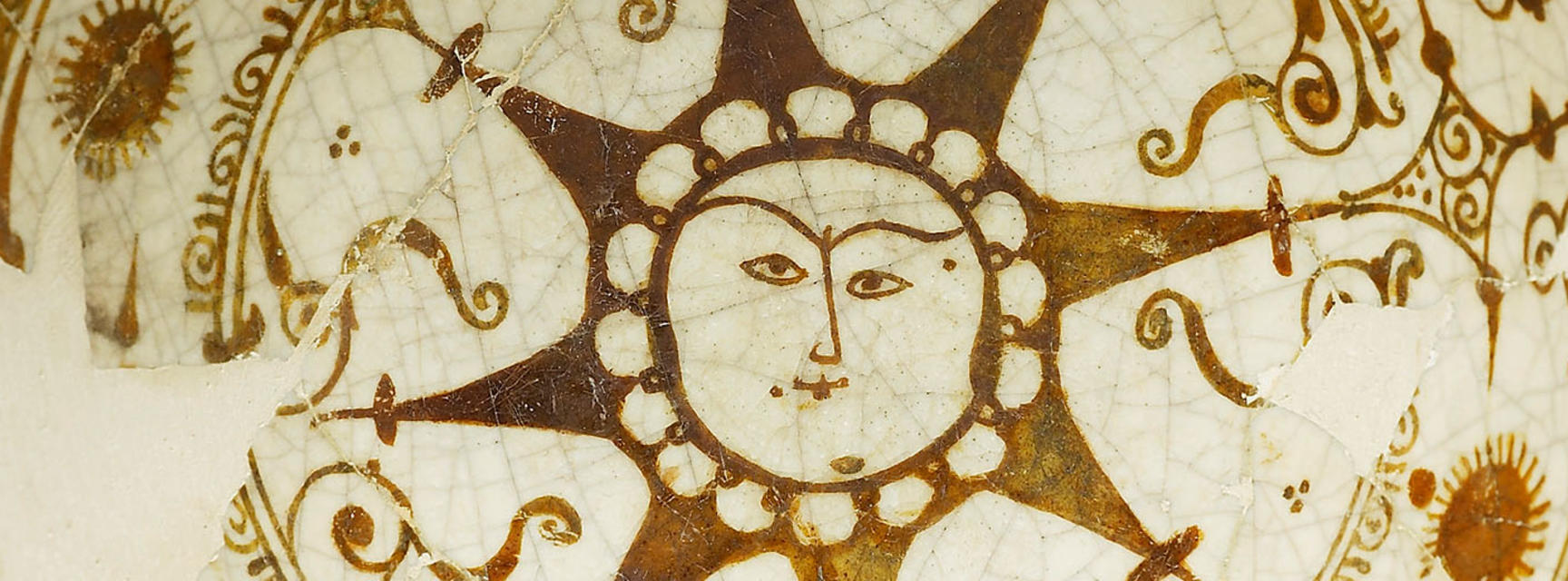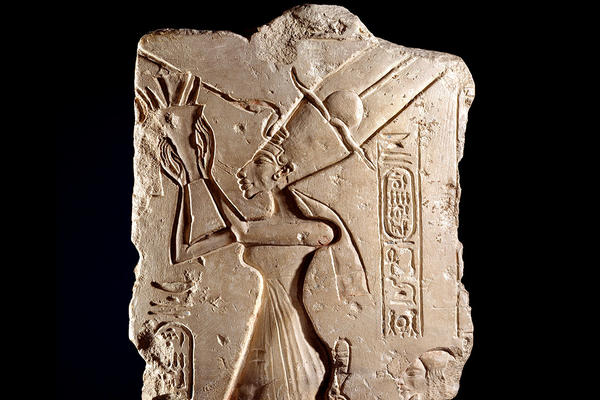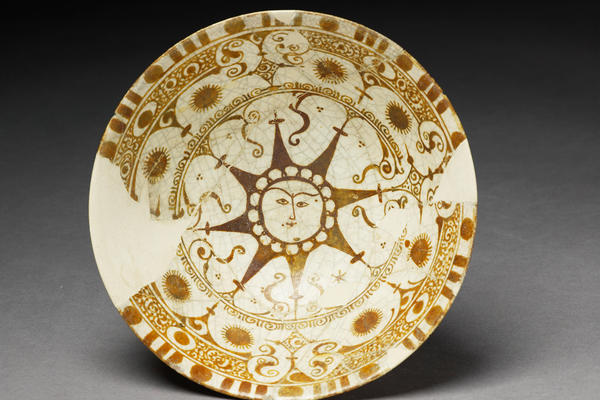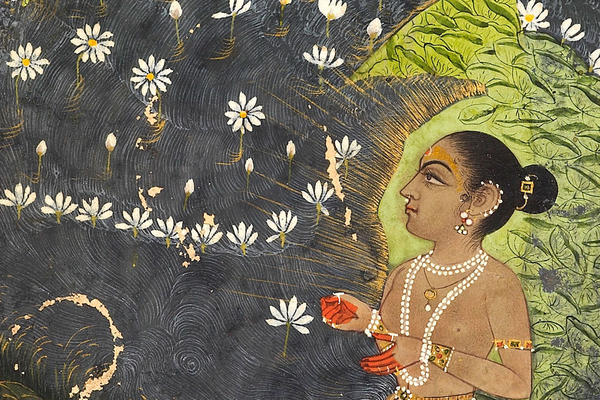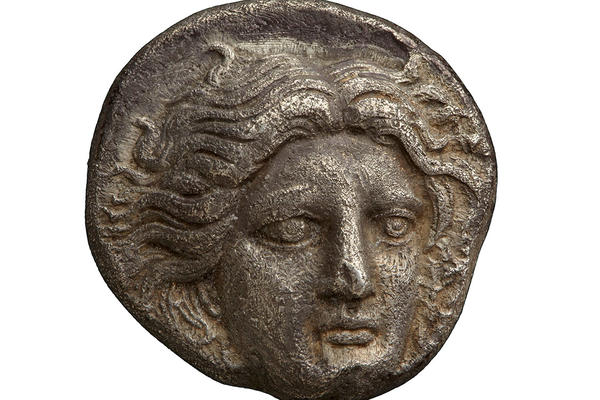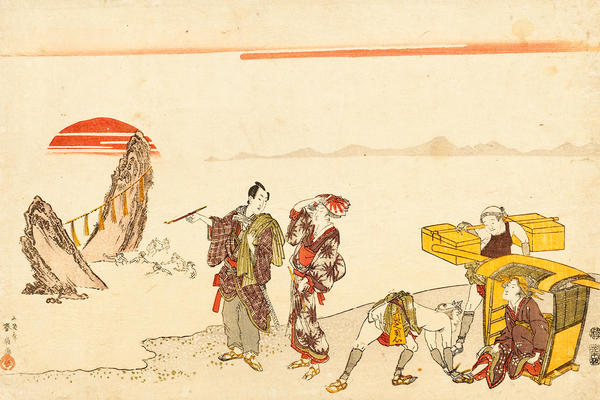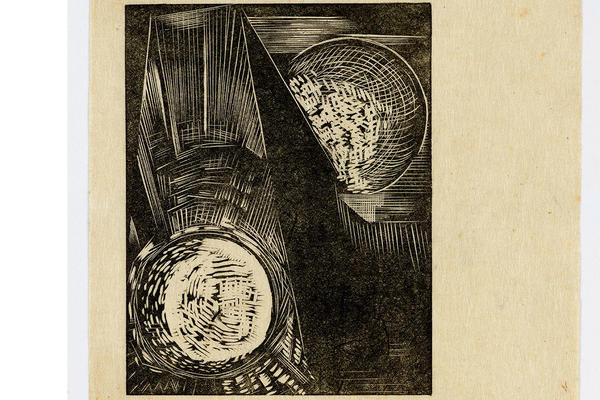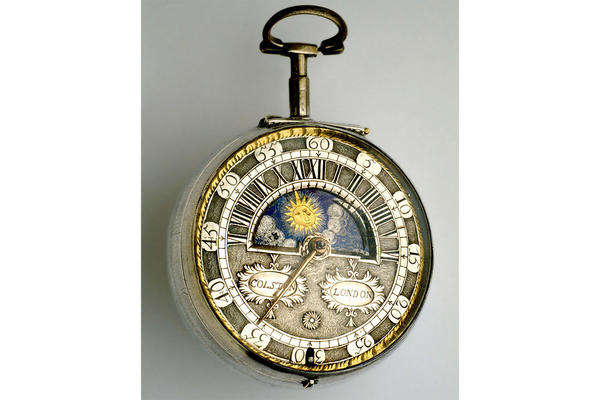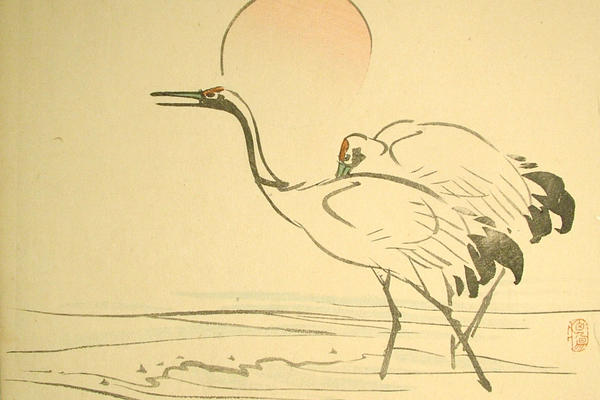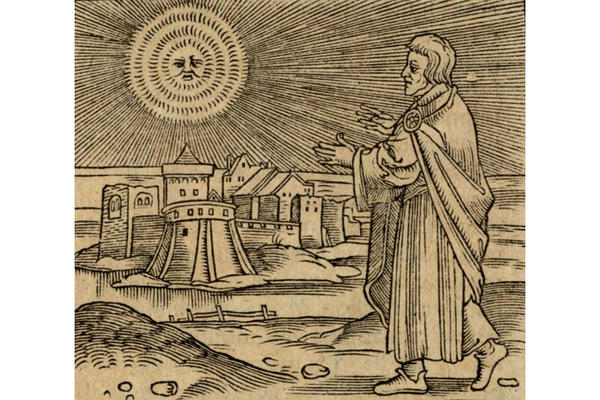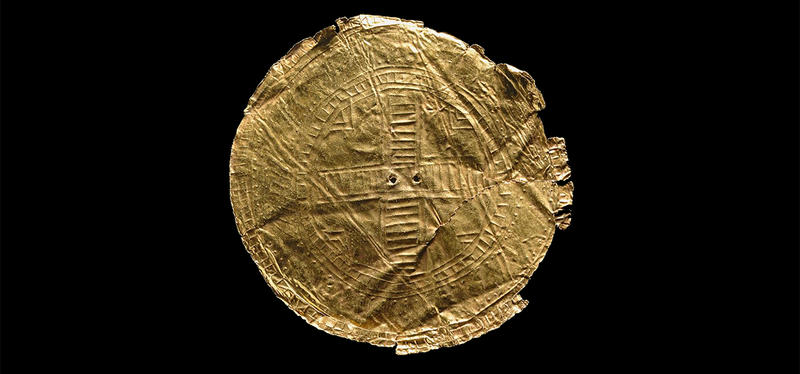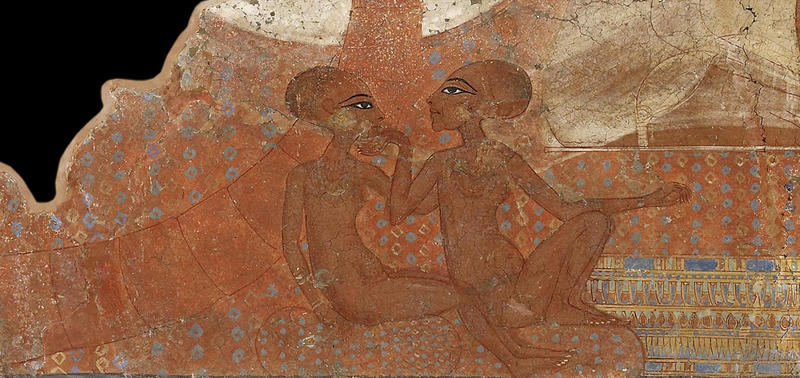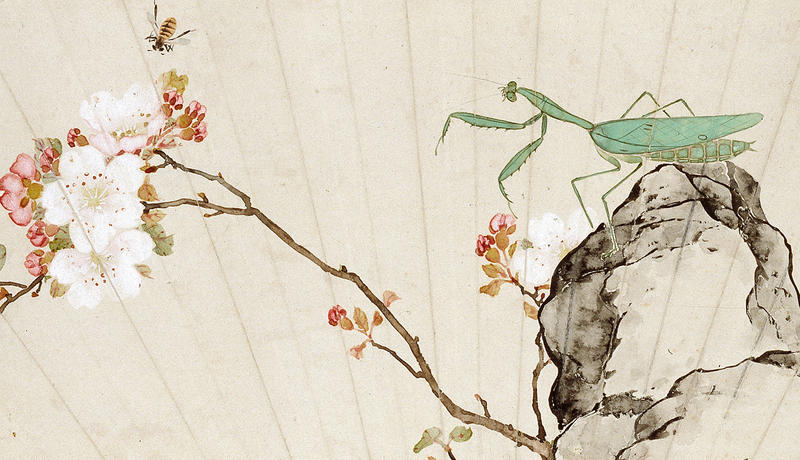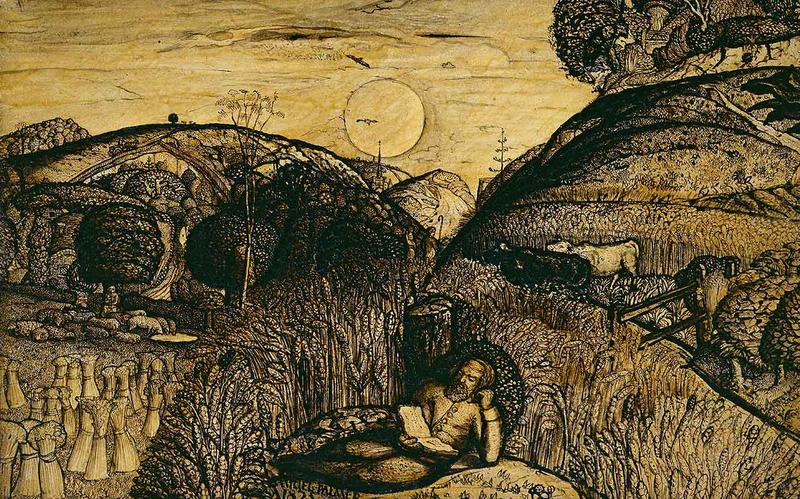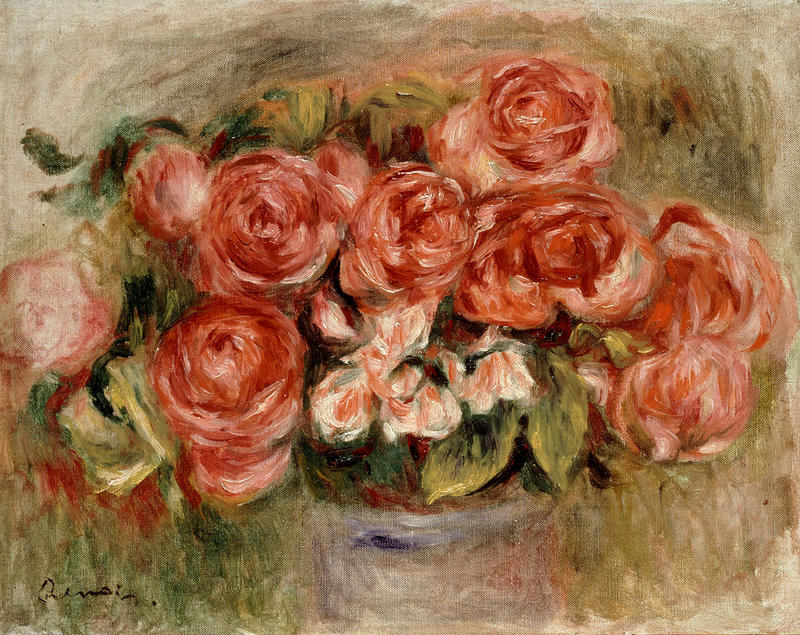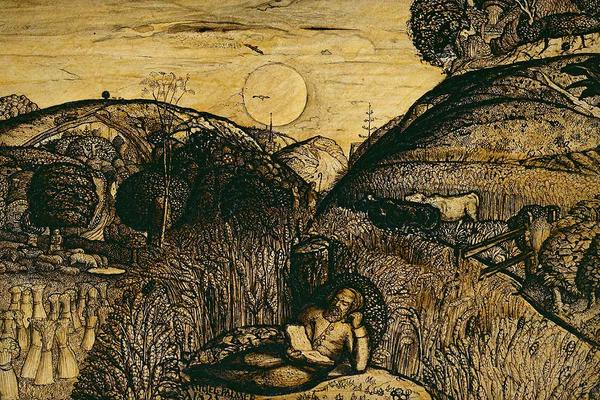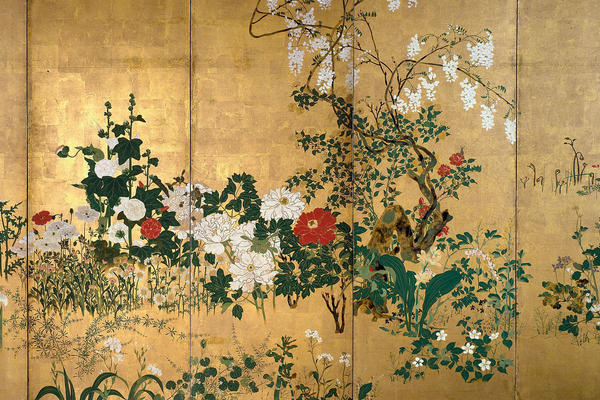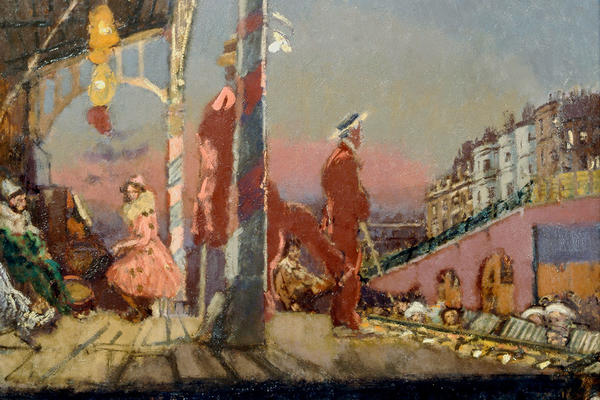SUMMER ARTWORKS
A selection of summer-inspired objects from our collection
5-minute read
We’re celebrating some of the sun-inspired objects and summer scenes in our collection as we enjoy the longer, hotter days whether it rains or shines.
Dip into the stories behind these works.
SUN-FILLED ARTWORKS
We've been worshipping the sun for centuries. Sun gods and goddesses and the sun itself have inspired and adorned many objects and works of art from East to West since the 14th-century BC. Here you can explore some of the representations in our collections.
Nefertiti worshipping the sun god Aten
Iranian bowl with human-faced sun
Lady in a lotus lake worshipping the sun (detail)
Ancient Greek coin depicting Helios
Travellers at Futamigaura, c. 1810–1820
Sun and Moon wood engraving by Paul Nash, 1924
Silver and gold sun-and-moon watch, c. 1675–1710
Cranes and rising sun by Takeuchi Seihō, 1901
Creation of the sun illustration, 1535–1560
Sol (Sun) with sceptre and orb, 1515–1537
Ballyshannon 'Sun-Disc'
One of the earliest documented prehistoric objects, c. 2400–2100 BC
This decorated 5.5cm gold-foil disc was found in 1669 at Ballyshannon, Ireland, by men looking for a place described in an old Irish song where 'a man of a gigantick stature' was buried with gold ornaments. The disc is made of a thin sheet of beaten gold, and has raised decoration (repoussé) of a cross-shape surrounded by circles and geometric patterns.
Objects such as this are known as 'sun-discs' and are one of the earliest forms of sheet gold-work found in Britain and Ireland, dating to around 2500-2100 BC in the Early Bronze Age. Sun-discs may have been worn on clothing. They are often found singly or in pairs in burials.
On display in the European Prehistory gallery.
Princesses Fresco (detail)
c. 1345–1335 BC, excavated by William Flinders Petrie
The Pharaoh Amenhotep IV (about 1345–1335 BC), shortly after becoming king of Egypt, broke with the religious and political tradition to focus worship on the sun as a creative force called the Aten.
Changing his name to Akhenaten, ‘He who is beneficial to the Aten’, the king built a new capital city called Akhetaten, ‘The horizon of the Aten’ (now known as Tell el-Amarna), where he lived with his queen, Nefertiti, and their six daughters, who all followed in the devotion of the sun.
The informal theme of palace life at Akhetaten is beautifully conveyed in the so-called ‘Princesses fresco’. This fragment of wall painting is the lower part of a scene depicting Akhenaten and Nefertiti relaxing with their daughters, two of which are sitting casually on floor cushions in the foreground (shown above).
The painting was applied to mud plaster on a brick wall. It was excavated by William Flinders Petrie in the 1890s.
You can see the fresco in the Ancient Egypt gallery.
Ram of Amun-Re: powerful god of sun and air
This imposing and stoic statue was built by King Taharqa, conqueror of Egypt. The Ram represents the powerful god of sun and air Amun-Re, with Taharqa standing below. King Taharqa was the third in the line of Kushite rulers whose power extended from their native Nubia (northern Sudan) to the whole of Egypt, which they ruled as the pharaohs of the 25th Dynasty. Throughout his reign of Egypt Taharqa used the symbolic imagery of Amun-Re to evoke power and strength.
Many depictions of King Taharqa show him with the ram’s head and sun disc, symbolic of Amun-Re, worn as earrings or an amulet around his neck.
The statue usually sits in the Egyptian and Sudan galleries outside the Shrine of King Taharqa in the Ashmolean, the same position it was originally found in.
Praying mantis, bee and prunus blossom Chinese fan
Chen Fen, the artist of this fan painting, was a specialist in bird-and-flower painting from Panyu, Guangdong province. He was a prominent pupil of the leading Guangdong painter Ju Lian (1828–1904), whose gongbi ‘fine-brush’ painting style is evident here.
Hand-held fans have long been used to keep people cool in Asia. Used particularly in the hot summer months, the paintings on many fans depict summery scenes: plants, insects and water creatures. Rigid fans were used in China from the 2nd century BC, but folding fans made of folded paper braced by thin bamboo sticks are thought to have been developed in Japan and Korea around the 8th century.
Fans were carried by men as well as women, and were used to represent status and social identity. Different types of fans were made for different purposes, whether for court use, for dancing, or for the tea ceremony. With so much significance attached to the fan in Asia, great attention was paid to its decoration.
The Valley Thick with Corn
Samuel Palmer's idyllic, pastoral summer scene is inspired by Psalm 65, and the composition is characteristic of Palmer's belief in the munificence of God's bounty. It's one of six sepia drawings made in 1825 – the earliest and most individual expressions of Palmer's unique genius. These visionary works were forgotten until the 1920s, when Palmer's early landscape drawings became the crucial influence for English Neo-Romantics.
The dream-like atmosphere of this haunting drawing is emphasised by the absence of perspective and such details as the disproportionate size of the ears of grain in the foreground.
A talented artist, Samuel Palmer (1805–1881) was exhibiting his work at the Royal Academy when only 14. As a young man he met and became inspired by William Blake’s powerful imagery, derived from the Bible, Milton and Dante. Palmer began to work in the 'visionary' style that was to characterise his art for the next ten years.
This drawing can be seen in the Western Art Print Room, by appointment.
Get closer to Palmer's masterpiece with Dr Caroline Palmer in this mindfulness video
Evening shower at Ōhashi Bridge, Atake
By Utagawa Hiroshige, 1857
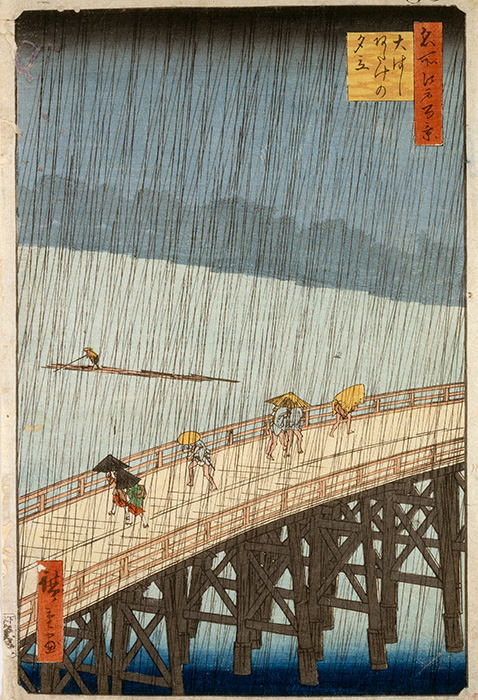
Image © Ashmolean Museum, University of Oxford | EAX.4740
People crossing the large bridge are caught in a summer rainstorm in this atmospheric print, one of the most famous of Hiroshige’s images and which was copied in oils by Vincent van Gogh.
The effect of the driving rain is created by using two separate woodblocks to overlay fine lines of slightly different greys in slightly different directions. This work is from Hiroshige’s final series of prints called Thirty-six Views of Mount Fuji. Hiroshige designed the series in large, vertical format, allowing him to demonstrate bold composition skills, in particular his fondness for balancing foreground elements with landscape backgrounds.
A prolific artist, Utagawa Hiroshige (1797–1858) is thought to have created between 4,000 and 5,000 print designs during a career that lasted almost 50 years.
EAX.4740
Japanese prints on demand
Still Life of Roses in a Vase
By Pierre-Auguste Renoir, c. 1909–1919
Towards the end of his life, Renoir (1841–1919) painted a large number of still lifes of flowers. These included a series of roses in round bowls. They were painted quickly in oil on canvas, and show the artist making bold experiments with colour and tone, within the confines of a modest composition.
Renoir was one of the leading painters of the Impressionist group. He evolved a technique of broken brushstrokes and used bold combinations of pure complementary colours to capture the light and movement of his landscapes and figure subjects. Following a visit to Italy in 1881 his style changed, becoming more linear and classical.
Aside from being one of the nation's favourite flowers, with blooms that dominate the summer months, the rose has inspired many artists and makers throughout history. If one symbol represents love, power, royalty, beauty, sensuality and mysticism, it's the rose.
On display in the Pissarro gallery.
Seagull Sailors
By Morimura Ray, 1978
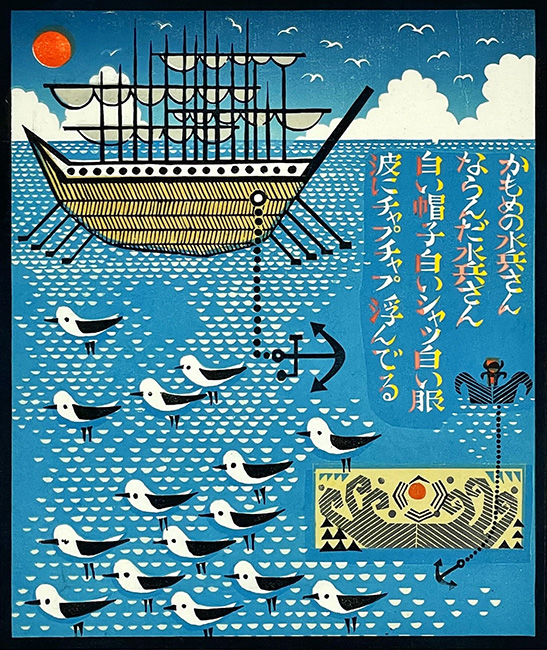
Seagull sailors, Morimura Ray, colour woodblock print, 1978 © Morimura Ray / The Tolman Collection
The inscription on this cheerful print by artist Morimura Ray (b. 1948) is from a Japanese nursery rhyme by the female poet Takeuchi Toshiko, released in 1937:
'Seagull sailors, all in a row
With white hats, white shirts, white suits
Bobbing in the waves, splish-splash'
Morimura Ray worked for a while as an illustrator of children’s books and this work has an appealing playfulness.
Most of his prints depict scenes of traditional Japanese life – gardens, temples, festivals and landscapes. Yet his work is not traditional. He avoids realism, drawing on his background in abstract oil painting, graphic design and book illustration to create a unique style of geometric patterning, in which he simplifies and repeats forms to create intricate compositions. Combined with his strong yet muted colour palette, this approach gives his work a modern yet ‘retro’ feel.
Morimura has developed a printing method that is based on traditional Japanese woodblock printing techniques and uses handmade Japanese paper, but incorporates linocut and oil-based inks rather than traditional water-based pigments.
The Ashmolean is fortunate to own 80 works by Morimura, 78 presented over the past 15 years by Philip Harris, and two recently donated by the artist himself.
Not on display, but Ray's work can be viewed on request in the Eastern Art Study Room
EA2022.115
SUMMER JIGSAW PUZZLES
We've turned some of the above summer artworks into online jigsaw puzzles. Browse more puzzles


